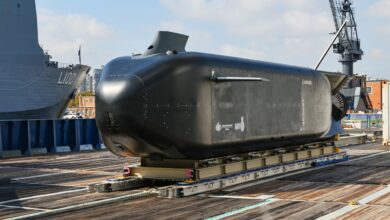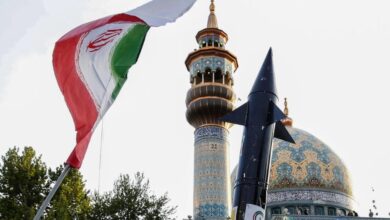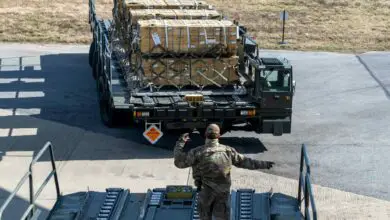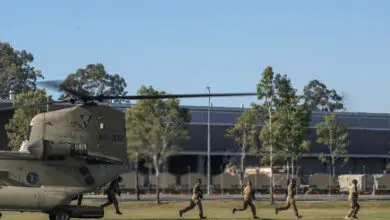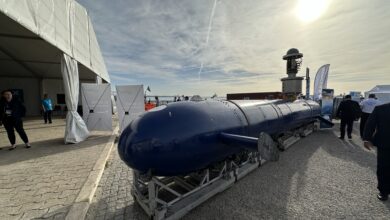
Speaking in Washington, DC in late October, former Australian Prime Minister Tony Abbott floated the idea of acquiring Los Angeles-class nuclear submarines from the US. At the time, Abbott quipped that he would have asked the British the same question if he were speaking in London instead.
Despite the nonchalant way that the suggestion of leasing or purchasing American fast attack nuclear submarines came about, the possibility of this transaction has the potential to drastically change dynamics in the South Pacific and minimize the likelihood that American soldiers would have to risk their lives in the region.
Construction of the first Los Angeles-class hull began in 1972, and the new class became fully operational in 1976. Developed by General Dynamics Electric Boat and constructed by Newport News Shipbuilding, these state-of-the-art boats had one clear goal in design: be fast enough to intercept and sink any Soviet submarine threat.
With the ability to go two decades without refueling, the only concern left in extended operations is ensuring the crew stays fed.

Australia Acquiring Nuclear Subs
The agreement that spurred Australia’s submarine acquisition, known as AUKUS, is a trilateral security pact Australia, the United Kingdom, and the United States entered into on September 15, 2021. When the agreement was announced, US officials described it as a way to line up common interests in the Indo-Pacific.
The Biden administration has appointed James Miller – a former top Obama Pentagon official – to spearhead the American effort to help Australia develop nuclear-powered submarines and broaden military cooperation.
Under the agreement, the countries will exchange information and technological development in the fields of nuclear propulsion, artificial intelligence, quantum computing, and long-range missile defense, among other things. These collaborative developments have the goal of maintaining peace and stability in the Indo-Pacific region; an area that has seen increased Chinese aggression.
AUKUS effectively canceled Australia’s previous $90 billion submarine contract with the French. Calling it a “stab in the back,” the French government publicly announced that they had received only a few hours’ notice of the reversal.
The situation with the French has been mostly mended by a 30-minute phone call between US President Joe Biden and French President Emmanuel Macron but not before Paris recalled ambassadors from Washington and Canberra.
Taiwan
While the US won’t say it publicly, it is China’s aggression that is the genesis of this agreement. Nearly two years after the Western press dropped the Hong Kong issue, China has begun ramping up pressure against Taiwan. Providing submarines directly or in the form of designs to the Australians would be a clear message to Beijing that America stands with Taiwan — that would indeed be a historic change.
The United States has historically treated Taiwan as a de facto independent state through the policy of “strategic ambiguity.” This policy of essentially “not picking a side” has always challenged Beijing’s war planners in predicting America’s stance during any plan of an invasion of Taiwan.

The United States has never committed to providing a police force along the Taiwan Strait – a narrow of 110 miles of ocean dividing Taiwan and mainland China – but it is expressly interested in ensuring that commerce and free trade is not disrupted.
Until recently, Western analysts have assumed that China could not capture Taiwan in a quick maneuver. Recent developments in China’s offensive missile technology have challenged this conclusion and further raises questions about the rationale of maintaining America’s policy of “strategic ambiguity.”
In other words, must the US explicitly state its plan in the event of a Taiwan invasion – and what should that plan be?
Countering China
Australia’s implementation of this platform in the Indo-Pacific region would provide an immediate, unseen, and unpredictable counter to any Chinese naval advance.
The threat to China’s Liaoning-class carriers, consisting of refurbished models and clones of the Soviet Kuznetsov-class carriers, would be tremendous and could force intended air attacks to launch from mainland China. That would give Taiwan’s formidable air defense over 60 miles to track, trace, and destroy any incoming missile threats.
The effect of these multi-faceted changes will likely force China’s war planners to reconsider what advantage, if any, can be maintained with their recent technological advances. For America, it means not having to formally commit operational support – also known as sending our boys in harm’s way – and putting off modifying its policy of strategic ambiguity.
Whether AUKUS leads to providing Australia with completed submarines directly or just with designs has yet to be answered. While China will clearly see through these back door deals to exchange information and material, without America directly involved in the observable actions at sea there is little they can do beyond throwing diplomatic temper tantrums.
Together with the UK and Australia, AUKUS has the potential to allow three of the Five Eyes partners (intelligence alliance comprising Australia, Canada, New Zealand, the UK, and the US) to ensure stability in the Indo-Pacific theater together.
Australia will take the helm operationally as the leading democracy in the region. Prime Minister Scott Morrison has clearly committed himself to the American ideal of carrying a big stick within the “changed security environment” that exists due to China’s growing antagonism. This compact is a great opportunity to provide Australia with those resources.
 Horace Cooper is a senior fellow with the National Center for Public Policy Research, co-chairman of the Project 21 National Advisory Board, and a legal commentator.
Horace Cooper is a senior fellow with the National Center for Public Policy Research, co-chairman of the Project 21 National Advisory Board, and a legal commentator.
Horace previously was a professor at George Mason University in Virginia, served in senior capacities within the George W. Bush administration, and was a senior counsel to US House Majority Leader Dick Armey.
The views and opinions expressed here are those of the author and do not necessarily reflect the editorial position of The Defense Post.
The Defense Post aims to publish a wide range of high-quality opinion and analysis from a diverse array of people – do you want to send us yours? Click here to submit an op-ed.

